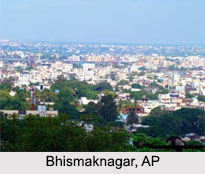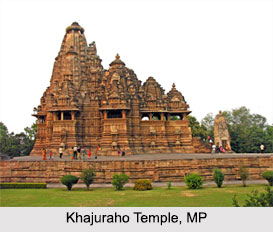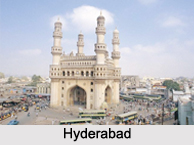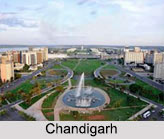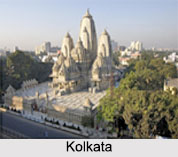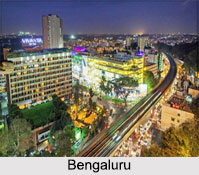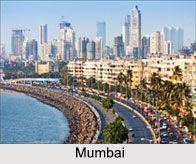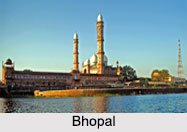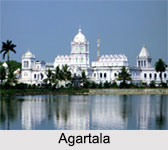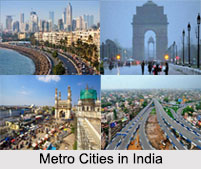 Tourism in Jeypore describes the beauty of the city in Odisha and Andhra Pradesh border along with the development of the city in eco tourism area. Some of the tourist attractions in Jeypore are the sunrise and sunset near Kolab River, Jagannath Sagar, Jeypore Eco Tourism Park, Sabara Shrikhetra, Gupteshwaar, Deomali and Raja Mahal and Surya Mahal and many more.
Tourism in Jeypore describes the beauty of the city in Odisha and Andhra Pradesh border along with the development of the city in eco tourism area. Some of the tourist attractions in Jeypore are the sunrise and sunset near Kolab River, Jagannath Sagar, Jeypore Eco Tourism Park, Sabara Shrikhetra, Gupteshwaar, Deomali and Raja Mahal and Surya Mahal and many more.
Kolab
Kolab is located at an altitude of about 3000 ft. above sea level on river Kolab. It stands near the majestic Kolab Reservoir generating Hydro Electric Power. The place is highly admired for its scenic beauty, attracting people for weekend picnic and boating. Jeypore and its surrounding areas are nature lover`s delight. Owing to its geographical position among the hills it is endowed with scenic beauty. The green hills, fresh water lakes and springs make it a treat of nature. There is an enormous untapped tourism industry that the place has to offer. Some of the prominent tourist attractions are:
Jagganath Sagar and Jeypore Park
Jagganath Sagar and Jeypore Park is a beautiful lake situated in heart of the town surrounded by beautiful park and play area has always been the favourite hangout zone for Jeypore public. Jagganath Sagar is all packed in the evening when people of all ages come here to relax themselves. A boating club, delicious food inns adds a charm to the park.
Sabara Shrikhetra
Sabara Shrikhetra is situated 22 km away from Jeypore and 2,900 ft. above sea level. The modern Jagannath Temple has come up on a hilltop. The Tribal Museum behind the temple caters to and educates the tourists about the culture and heritage of the tribal.
Deomali
Deomali is located at about 50 km from Jeypore. This is the highest mountain peak in Odisha. The path to the top is as breathtaking as the view at the peak. It is not only a marvel for the tourists but also to the adventurous sports lovers for hang gliding, mountaineering and trekking.
Gupteshwaar
Gupteswar Cave is located about 60 km. from Jeypore. The place is famous for the cave shrine of Lord Shiva or Mahadeva located at the top of a limestone hill which is about 151 meters higher than the surrounding beautiful countryside, the place is ideal for natural scenery. One can reach the cave by ascending a flight of steps. It is popularly known as Gupta Kedar in the vicinity, this sacred place is associated with Lord Rama of the epic Ramayana. The nearby hill has been named "Ramagiri". Devotees from all over the country visit this cave shrine of Lord Shiva the year around. Its scenic beauty makes it a double delight for visitors. It is famous for the stalactite that is worshipped as the lingam.
Kolab Dam
Kolab Botanical Garden stands beside the Majestic Kolab reservoir and is ideal as weekend picnic destination. This place is highly admired for its scenic beauty, attracting tourists for weekend picnic and boating. The well maintained botanical garden has over 200 varieties of flowering plants.
Raja Mahal
The centuries-old palace on main road Jeypore (Sardar Patel Road) is an architectural marvel. Of late due to negligence from the concerned authorities it has been in a state of urgent attention.
Shakti Water Fall
Shakti Water Fall commonly said as "S" water fall for the path of the falls resembles the alphabet “S†is a must see place. This place is a fun and adventurous camping ground among the youth of Jeypore.
Machhakund
Machhakund is a place of pilgrimage as well as a centre of Hydro Electric Project for the waterfall here (157 meters). A beautiful township amidst deep greenery of nature has developed around the project. It is also a place of pilgrimage and is associated with the name of Lord Chaitanya who is believed to have visited this place in the early part of 16th century.
Bagara
Bagara is famous for waterfalls. The place is reached on road for 3 miles from Khondaguda which is 10 miles from Koraput and 6 miles from Jeypore. There are three small waterfalls from a height of about 30 ft. on the river Kolab. The place is surrounded by beautiful natural scenarios. It has a rest house at the site of the falls for use of the visitors.
Related Articles
Odisha
Temples of Odisha
Districts of Odisha
Puri, Odisha
Forts in Odisha
Crafts of Odisha
Beaches of Odisha
Cities of Orissa
